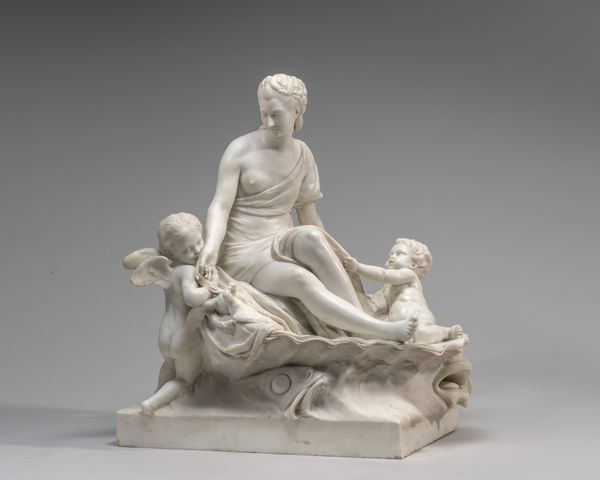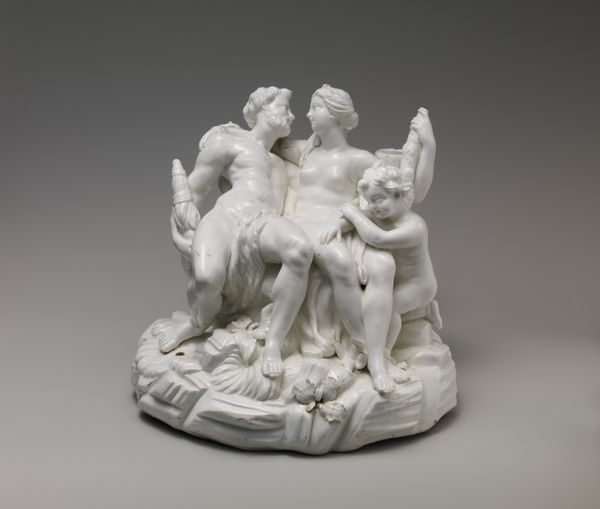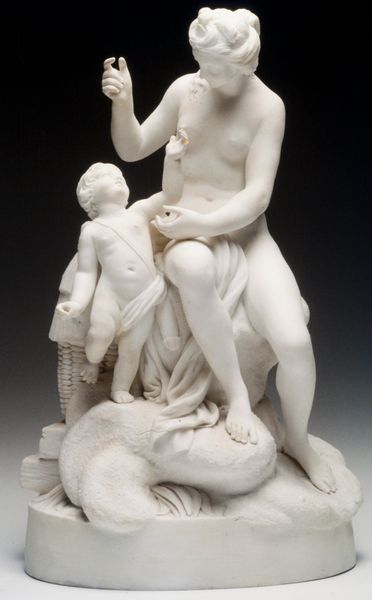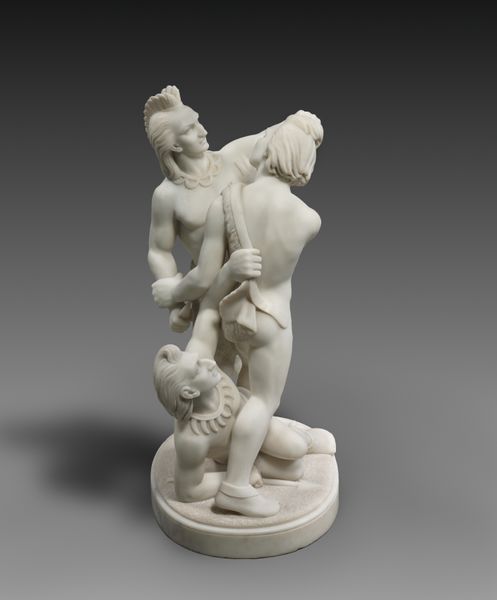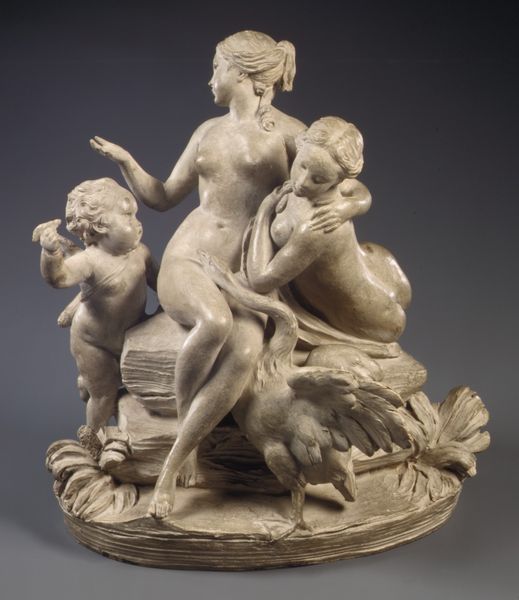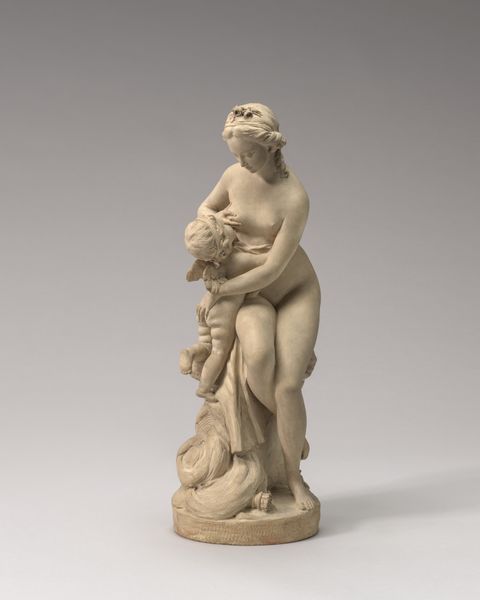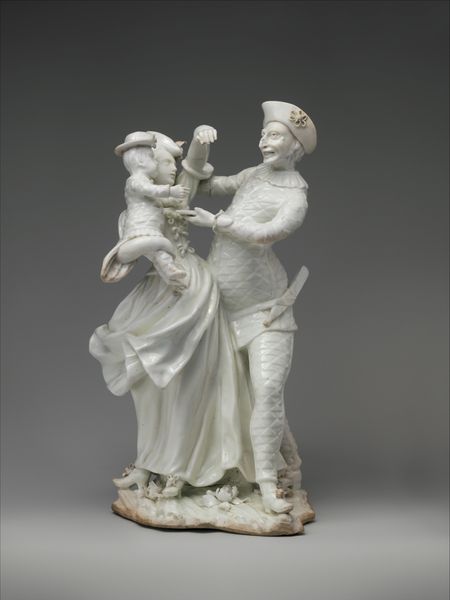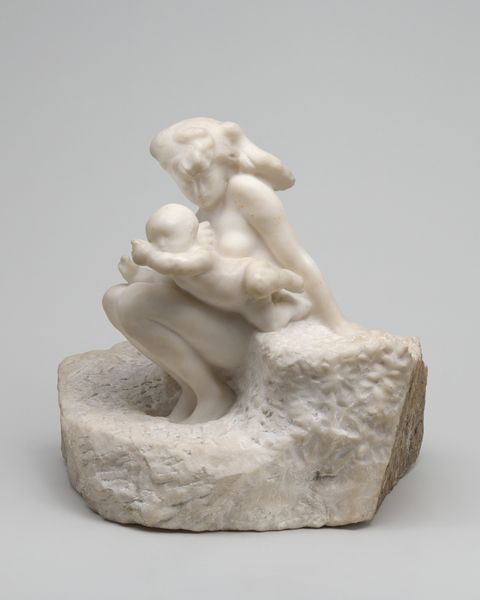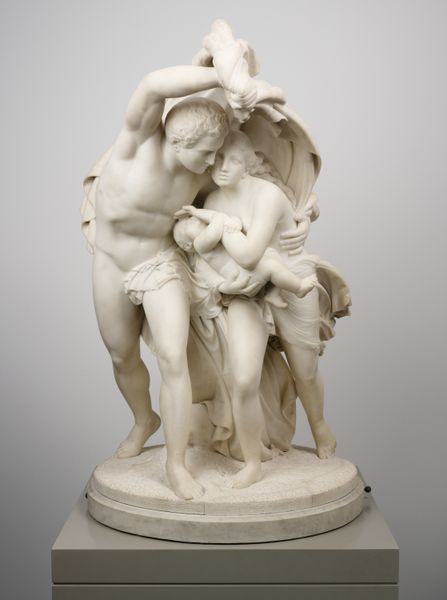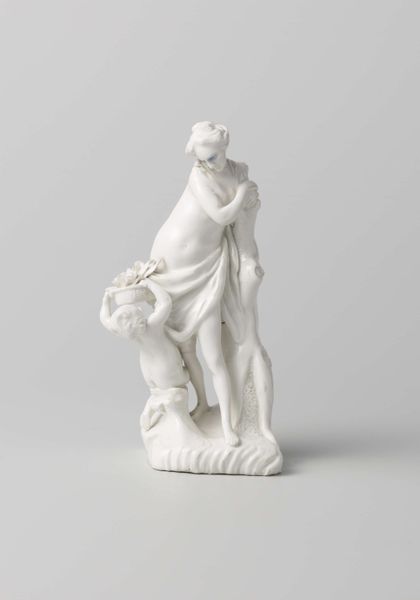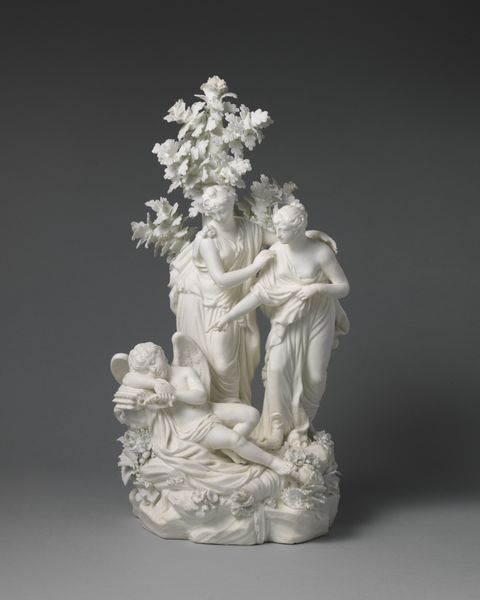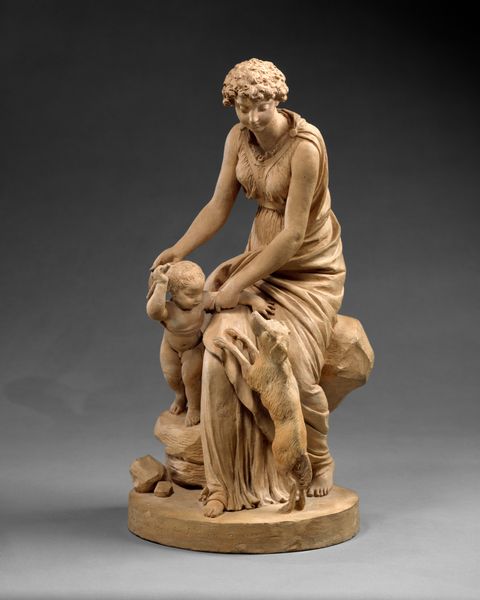
Dimensions: H. 16 in. (40.6 cm.); W. 14 1/4 in. (36.2 cm.); H. of base 4 1/2 in. (11.4 cm.); W. of base 15 1/16 in. (38.3 cm.)
Copyright: Public Domain
Curator: The soft, almost saccharine mood of this tableau is immediately striking. The luminous porcelain almost vibrates. Editor: Indeed. What we're looking at here is "Seated Woman and the Infant Hercules," crafted sometime between 1776 and 1794 by Dihl et Guérhard. It resides here at the Metropolitan Museum of Art, a captivating example of late 18th-century decorative art. Curator: Observe the graceful lines, the carefully balanced composition. The gentle curve of the woman's arm echoes the rounded form of the infant Hercules, creating a sense of visual harmony. The gaze downwards to Hercules creates a subtle asymmetry with the figure of the dog looking out to the viewer creating depth. It is pleasing to the eye, balanced without strict adherence to mirroring elements. Editor: Precisely. Remember the context: porcelain production during this era was deeply tied to aristocratic patronage. The creation of luxury goods, like this sculpture, bolstered royal power and served as markers of social status. This idealized vision of motherhood, combined with a depiction of mythological strength in the form of the infant Hercules, likely spoke to the values and aspirations of its original audience. Curator: Semiotically, the gleaming white porcelain surface operates as a signifier, connoting purity, wealth, and the refinement of aristocratic taste. And structurally, the work has two triangular structures meeting as the dog; we can examine its thematic and physical components, and view this piece of art to understand this meeting between mother and child, protector, and protected. Editor: I'm particularly intrigued by how Hercules's presence elevates the domestic scene to one of mythic proportions, as Hercules' future as the son of Zeus destined for greatness is not yet known in the domestic scene. It serves to naturalize the concept of heroism and suggest a harmonious intersection between private virtues and public duty. This sort of art reinforces the period's moral and political constructs and uses art as an ideological prop. Curator: So, a closer examination illuminates the interplay of form and content in expressing Rococo ideals. The use of negative space invites the eye to circulate through the figures. Editor: Yes, the sculpture tells of social ideals of class, power, and familial devotion prevalent in pre-Revolutionary France, all frozen in gleaming white porcelain. I'm grateful for the reminder of how intertwined aesthetics and ideology can be.
Comments
No comments
Be the first to comment and join the conversation on the ultimate creative platform.
